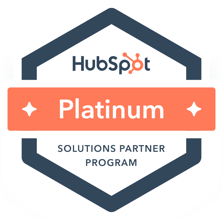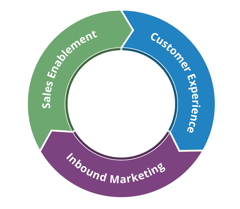In this digital and artificial intelligence era, the internet is a sea of information. But when it comes to authentic and genuine content, finding content that you know is genuinely authentic is challenging, especially in the current state of ChatGPT. If you're unfamiliar with this, ChatGPT is a large language model developed by OpenAI that can generate human-like responses to natural language inputs. It is based on the GPT architecture (Generative Pre-trained Transformer) and has been trained on a massive amount of text data using unsupervised learning techniques. ChatGPT can be used for various natural language processing tasks, including language translation, summarization, and conversation generation.
ChatGPT can help give you a starting point with your content, but it will always require human intervention to ensure it is accurate and in line with your brand. As a marketer, generating content can sometimes be fairly easy, especially when companies are now leveraging AI, but creating trustworthy content can (and should) be more time-consuming. Here are seven valuable strategies for creating authentic content that builds trust with your audience.
1. Use statistics to back your content
Anyone consuming your content wants to find real statistics and data about the content you are writing about to ensure they know the source and can validate the information they are reading. Until your content is backed with statistics, it will always remain conjecture. Adding statistics to your content validates the information and enhances your point of view. To strengthen the trustworthiness of your content, link your statistics to the original source of the statistics or source them at the end of your webpage or blog.
2. Invite experts to share their perspective
Another way to make your content more trustworthy is by sourcing experts to share their knowledge about the topic. This strategy offers incredible advantages. First, you get a chance to showcase the wisdom of others. Secondly, they are more likely to help you share your content. When doing this, make sure that you are validating the content that others are providing to you as well. Remember, the content is still posted on your website, so ensuring it is valid and relevant is always crucial.
3. Use images to showcase essential content points
This mainly applies if your content revolves around technical explanations or processes. Screenshots always come in handy, especially when you are showing your audience to do something technical. Creating simple charts and graphs helps make your content consumable and authentic if your content contains numerical data. For content that doesn't lend itself to charts, graphs, and screenshots, include photos to make your content visually appealing. This could be real photos you have taken of your brand or product or even stock photos. Adding a visual element that helps to showcase your content points will reinforce your message.
4. Back up your content with examples
If your content involves something you think your audience should do, it goes a long way to include examples that prove your ideology and point of view. You'll be able to source your examples from past experiences or case studies. For instance, if I'm looking to show our audience how conversion rate optimization can help their company improve lead generation metrics, I can link to a blog article about that specific topic and provide examples such as adding calls-to-action to your website, testing pop-up forms, and more. These examples add relevancy to your content.
5. Avoid common topics and titles
One of the things that can quickly reduce the authenticity of your content is churning out the same topics as your competitors. Make sure you separate yourself from the competition and pick the most popular topics your audience is searching for online. You can get this data from Google Analytics, Google Keyword Planner, SEMRush, and many others. Doing this type of content research is essential to help you produce unique content to your brand, but it still solves the problems your audience is searching for a solution for online.
6. Be consistent and keep a regular content cadence
Consumers want to avoid visiting your website and seeing content from months ago. Continue to generate unique and helpful content regularly. If consumers visit your website or even social channels with older content, it can discredit the authenticity of your newer content when it is available. I recommend that brands try to publish one blog every week. That may be much content to produce if you're starting, so a minimum of two blog articles per month for the first six months would be a great starting point if you're newer to content marketing.
7. Focus on solving problems, not gaining traffic
Highly authentic content to focus on solving the problem rather than generating traffic. Creating content is not to gain a one-time audience but to ensure they keep coming back. You can engage your unique insights and strengths to make content that stands out among your competitors.
Tools like ChatGPT and other AI tools can be beneficial to help you start the content creation process, but it's essential to include your own brand's personality, has a human element to your content, and interject real-life examples, stories, and imagery to bring your content to life. This will help you build trust with your audience, so they know your content is unique and relevant and will likely be more beneficial than content generated from AI without any human involvement.

__Square.png?width=250&height=250&name=Marketing_Hub_(1)__Square.png)




.png?width=250&name=diamond-badge-color%20(1).png)
